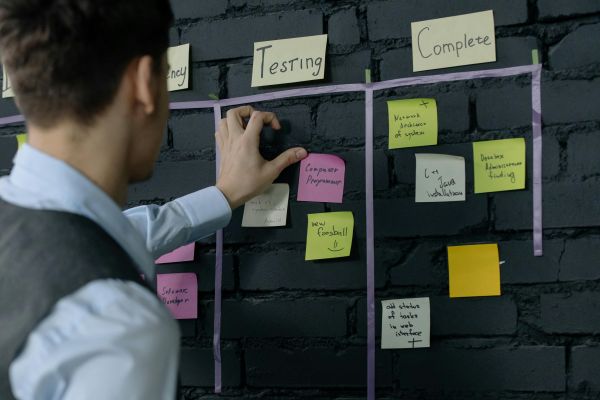
Scrum is an agile framework that is widely used in software development projects. It is a flexible and iterative approach that emphasizes teamwork, communication, and continuous improvement. One of the key components of Scrum is the retrospective, which is a meeting held at the end of each sprint to review the team’s performance and identify opportunities for improvement. In this article, we will provide tips and tricks for running effective Scrum retrospectives that will help your team achieve its goals.
Scrum retrospectives are an essential part of the Scrum framework. They provide an opportunity for the team to reflect on the previous sprint and identify what went well and what could be improved. The retrospective is typically held at the end of each sprint and involves the entire team, including the Scrum Master, the Product Owner, and the development team. The purpose of the retrospective is to identify areas of improvement that can be addressed in the next sprint.
One of the most important things to keep in mind when running a Scrum retrospective is to create a safe and open environment for the team. The team should feel comfortable sharing their thoughts and ideas without fear of judgment or retribution. As the Scrum Master, it is your responsibility to facilitate the discussion and encourage everyone to participate. This can be done by using techniques such as round-robin or dot-voting to ensure everyone has a chance to speak.
Another key aspect of running an effective Scrum retrospective is to focus on specific, actionable items. It is easy to get bogged down in generalities and vague feedback, but this does not lead to meaningful change. Instead, encourage the team to identify specific actions that can be taken in the next sprint to improve performance. These should be concrete and achievable goals that the team can work towards together.
It is also important to keep the retrospective focused on the team and their performance. While it may be tempting to point fingers or blame others for problems, this is counterproductive and can damage team morale. Instead, encourage the team to focus on what they can do to improve, rather than what others should be doing differently.
One technique that can be helpful in running an effective Scrum retrospective is the “five whys” method. This involves asking “why” five times to get to the root cause of a problem. By doing this, the team can identify the underlying issues that are contributing to the problem and work towards a solution. This technique can also help to prevent the team from jumping to conclusions or making assumptions without fully understanding the issue.
Another important aspect of running an effective Scrum retrospective is to follow up on the actions identified in the previous retrospective. It is easy to forget about these items once the meeting is over, but this will not lead to meaningful change. As the Scrum Master, it is your responsibility to ensure that the team is making progress towards their goals and that the actions identified in the previous retrospective are being addressed.
In conclusion, Scrum retrospectives are a crucial part of the Scrum framework and can help your team achieve its goals. By creating a safe and open environment, focusing on specific actions, keeping the discussion focused on the team, using techniques such as the “five whys” method, and following up on actions identified in previous retrospectives, you can run effective Scrum retrospectives that will drive continuous improvement. With these tips and tricks, your team will be well on its way to success.






0 Comments